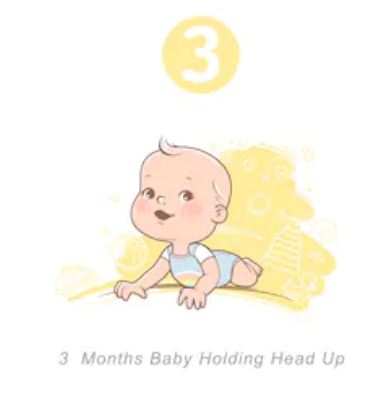Complete Baby Care Tips For New Parents
 |
new mom tips
|
Kids and parenting tips
New Mom Tips for Babies
You have gone through a period of pregnancy, labor, and childbirth and are now ready to go home and start your life with your newborn baby. Once home, you may feel like you do not know what you're doing!
These tips can help even the most nervous parents for the first time feel confident about caring for a newborn baby in no time.
Get Help of Parents after Birth
Remember to ask for help from doctors, Parents, and Friends during this time, who can help you start breastfeeding or bottle feeding. And to show you how to hold, move, change and take care of your newborn baby.
Newborn Baby Care 1st Month
First Time Parents Tips
If you have not spent a lot of time with newborns, their fragility can be daunting. Here are some basics to remember:
- Make sure to wash your hands before handling your baby. Newborns do not yet have a strong immune system, so they may be infected. Make sure everyone who handles your baby has clean hands.
- Support your baby's head and neck. Cradle your head when carrying your baby and support baby’s head when you lift the baby up or lie down.
- Never shake your newborn, either in play or frustration. Shaking can cause bleeding in the brain. If you need to wake your baby, do not shake. Instead, tickle your baby's feet or blow gently on his cheek.
- Make sure your baby is secure in the baby carrier, stroller or car seat. Limit activities that may be too difficult or too dynamic.
- Remember that your newborn is not ready for a difficult game, such as being shaken on the knee or thrown in the air.
New Mom Tips and Tricks
Bonding and Soothing
 |
baby tips for new moms
|
The creation of relationships, probably one of the most enjoyable aspects of infant care, occurs during the sensitive period of the first hours and days after birth when parents make a deep connection with their child. Physical proximity can foster an emotional connection.
For infants, attachment contributes to their emotional growth, which also affects their development in other areas, such as physical growth. Another way to conceive of the link is to "fall in love" with your baby.
Swaddling, which works well for some babies in their first few weeks, is another soothing technique that first parents should learn. Proper swaddling keeps the baby's arms close to the body while allowing for leg movement. Not only does the mat keep a baby warm, but it seems to give most newborns a sense of security and comfort. Swaddling can also help limit the surprise reflex, which can wake up a baby.
Here's how to swaddle a baby:
- Spread the reception cover by folding a corner slightly.
- Lay the baby face-up on the blanket with the head over the folded corner.
- Wrap the left corner over the body and place it under the baby's back, under the right arm.
- Place the lower corner above the baby's feet and pull it toward the head, folding the fabric if it is close to the face. Make sure you do not over-tighten your hips. Hips and knees should be slightly bent and turned over. Wrapping your baby too tightly can increase the risk of hip dysplasia.
- Wrap the right corner around the baby and place it under the baby's back on the left side, leaving only the neck and head. To make sure your baby is not too tight, make sure you can slide a hand between the blanket and your baby's chest, which will provide comfortable breathing. However, make sure that the blanket is not too loose to be able to undo it.
- Babies should not be swaddled after 2 months. At this age, some babies can turn around when swaddled, increasing their risk of Sudden Infant Death Syndrome (SIDS).
Diapers Care Tips for New Moms
 |
baby tips for new parents
|
Before bringing your new baby home, you will probably decide to use a cloth or disposable diapers. No matter what you use, your toddler will soil diapers about 10 times a day, or about 70 times a week.
Before changing diapers, make sure you have all the supplies on hand so you do not leave your baby unattended on the changing table.
You will need:
- A clean diaper
- Fasteners (if layers to be folded beforehand are used)
- Diaper rash ointment
- Clean wipes (or a container of warm water and a clean washcloth or cotton balls)
After each bowel movement or if the diaper is wet, lay your baby on your back and remove the dirty diaper. Use water, cotton balls, washcloth or wipes to gently clean your baby's genitals. When you take off a boy's diaper, do it with caution because exposure to air can cause it to urinate. When wiping a girl, wipe her down from front to back to avoid urinary tract infections. To prevent or cure a rash, apply an ointment. Wash your hands thoroughly after changing a diaper.
Bathing tips for your newborn baby
 |
new mom tips for babies
|
Prepare these items before bathing your baby:
- A soft, clean washcloth
- Mild soap and shampoo without fragrance for baby
- Stimulate the baby's scalp by using a soft brush
- Towels or blankets
- A clean layer
- Clean clothes
select a flat, secure surface (such as a changing table, floor or counter) in a warm room. Fill a sink, if nearby, or a bowl with warm water (not hot!). Undress your baby and wrap with a smooth and clean towel. Wipe your baby's eyes with a washcloth (or a clean cotton ball) soaked only with water, starting with one eye and wiping from the inside corner to the outside corner. Use a clean and soft corner of the towel or cotton balls to clean the eyes. Clean your baby's nose and ears with the wet washcloth. Then, wet the cloth again and, with a little soap, gently wash his face and dry it.
Then, using baby shampoo, create a foam, gently wash the head and rinse. Using a damp cloth and soap, gently wash the rest of the baby, paying particular attention to the folds under the arms, behind the ears, around the neck, and in the genital area. Once you have washed these areas, make sure they are dry, then lay down and dress your baby.
Tips on Feed and Burp for Your Newborn Baby
 |
baby care tips for new moms
|
Whether you feed your newborn baby or bottle, you may not know how often to do it. As a rule, it is recommended that babies be fed on-demand as soon as they appear to be hungry. Your baby may ask for help by crying, putting your fingers in your mouth or emitting sucking noises.
A newborn baby should be fed every 2 to 3 hours. If you are breast-feeding, give your baby the chance to suck about 10 to 15 minutes for each breast. If you are breastfeeding, your baby will probably take between 2 and 3 ounces (60 to 90 milliliters) at each meal.
Some newborns may need to be woken up every few hours to get enough to eat. Call your baby's doctor if you need to wake your newborn often or if your baby does not seem interested in eating or nursing.
If your baby has a tendency to be gas, have GERD, or look capricious while breastfeeding, try to have it burp after every ounce while bottle-feeding or every 5 minutes while breastfeeding. breastfeeding.
Try these Burping Tips:
- Hold your baby upright with his head on your shoulder. Support your baby's head and back by gently tapping your back with your other hand.
- Sit your baby on your lap. Support your baby's chest and head with one hand by squeezing your baby's chin in the palm of your hand and placing the heel of your hand on your baby's chest (be careful not to catch your throat or the chin of your baby). Use the other hand to gently tap the back of your baby.
- Lay you baby on your lap by facing down. Support your baby's head, making sure it is higher than his chest, and pat or gently rub his back.
If your baby does not brown after a few minutes, change the baby's position and try it for a few minutes before feeding again. Always bump your baby at the end of breastfeeding, then hold in a vertical position for at least 10 to 15 minutes to avoid spitting
Baby Sleep Tips for New Moms
 |
new mom tips for babies
|
Newborn baby sleeps about 16 hours or more in a day
Newborns usually, sleep for periods of 2 to 4 hours. Do not expect a night's sleep - the digestive system of babies is so small that they need food every few hours and must be woken up if they have not been fed for 4 hours.
- Use dim lighting in your room
- Make sure that the room temperature will be normal
- Give a dream feed to your baby
- Arrange a clean and soft bed to your baby
- Check out your baby condition for every 2-4 hours
- Clean the baby poop with baby wipes and change the diaper.


























